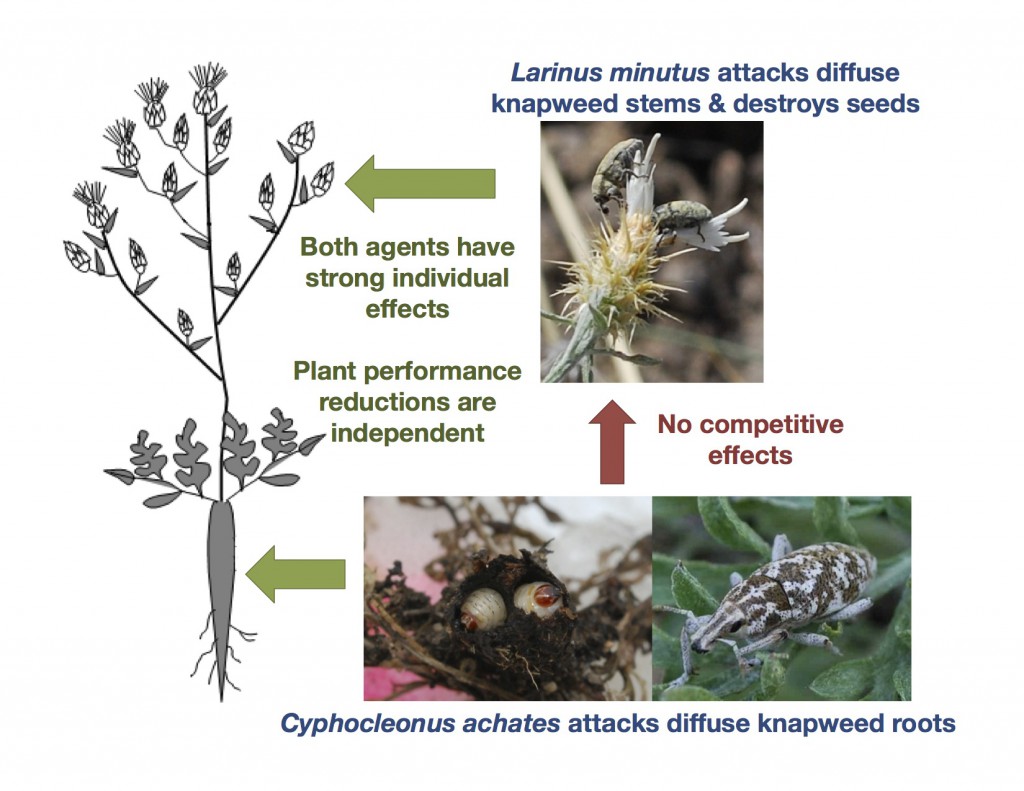Testing biological control agent compatibility: Cyphocleonus achates and Larinus minutus on diffuse knapweed
While weed biological control success is typically achieved with one agent, multiple agents are invariably introduced. Biological control agents that share a host–plant may interact either directly or indirectly through changes in host–plant quality. Negative interactions could reduce the impacts of the agents on the density of their host–plant while positive interactions (facilitation) could improve biological con- trol success.
In the Okanagan Valley of British Columbia, Canada, initial declines in the invasive rangeland weed, dif- fuse knapweed (Centaurea diffusa) were attributed to the introduction of the weevil Larinus minutus. A second weevil, Cyphocleonus achates has recently become common on diffuse knapweed. We sought to determine if the recent increase of C. achates could threaten the success of L. minutus. We considered whether L. minutus colonisation or performance remained the same when C. achates was present, and whether the two agents acted independently to reduce plant performance.
Neither changes in colonisation rates nor competitive interactions were apparent between C. achates and L. minutus. Both insects reduced plant performance and, for all metrics, the reduction in plant perfor- mance by one species was independent of the second. The two agents appear to be compatible and both should contribute to the control of diffuse knapweed. To assess how biological control agents interact requires understanding both their competitive interactions and their joint effects on the shared host.

